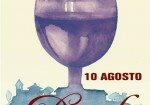 ALL HIS BOOKS ON AMAZON.IT
ALL HIS BOOKS ON AMAZON.IT
…the elated of castella and vineyards wont of Aleramo…
may seem trivial and obvious start talking of Monferrato from the famous to Carducci, that by dint of repeating and trumpeted on every occasion has now become nauseating and trombonesco; yet, beyond its evocative power, is still a useful parameter for understanding how this extraordinary land has always struck the collective imagination, not only at the national level. Even theAstesana, the Langhe, the Roero, the Canavese, so much for staying in Piedmont, for centuries are "elated" by vineyards and dotted with castles, but they have not Aleramo; do not have, as the Monferrato, an equally strong bond with the myth of a Middle Ages and feudal embodied and made true story from the figure of dynasts who ruled.
Certain, It's a myth revived and relaunched by 19th-century neo-medieval revival, referred Carducci was an avid singer, but already in ancient times that prevailed and not suspected by poets and troubadours across Europe, strengthened and touted by a civilization that had elected the Monferrato land a perfect place of the aristocratic proesse, where he revived and perpetuated the dream of Arthur and his knights.
The Monferrato is not, How often do you pretend to believe a "geographical expression", but it is one of the "little homelands" Piedmont born from marriage of history and Myth.
Genesis of the territory
You Have To, Once again, from Aleramo, because in his person the History and the Myth blend. The first tells us that at the end of the tenth century of our era, already powerful official of theEmperor Otto I, He was appointed head of the "brand of western Liguria”, and had granted vast estates in deserted loca between Tanaro, Orba and the sea. The second speaks of the legend, very old and already known in the fourteenth century, According to which the young Aleramo saw promise by the Emperor so much how much land would be managed to follow three days of galloping; his steed loses an iron, and to repair the damage and resume the race he had to use a brick, Hence "mon-shod".
Actually the descendents of Aleramo, took its name from the area where most concentrated their dynastic expansion policy, already defined "Monferrato" before their advent, though limited to a small territory situated according to some of the Po river and the Tanaro in and around Valenza, According to other Chivasso and Trino. The surname of the dynasty, "di Monferrato", It passed later to designate the wide State team assembled by it. If then the ancient original area was named so because of that cultivated Emmer ( from which Mons pharratus), or for being particularly fertile (from which Mons ferax) or because it was full of Lombard settlements called "Make" ( from which Mons Faratus) It remains only to scholars debates.
In medieval times the marchesi di Monferrato managed not only to coagulate a vast territory, but also to give it a solid identity and especially a huge ideological prestige through the echo of their deeds and their power. Their dream of dominating the entire hilly area between Po and Appennino, conferring political and administrative units, failed to take place because they were too many rivals that pursuing the same ambitions: Asti in the first place, the Princes of Achaea, the Savoia and many others. From the 16th century onwards became extinct once and for all the descendants of Aleramo (the last rulers of this dynasty were the Palaiologos from Constantinople, whose founder Theodore was son of Yolande last heir of Aleramici) and the State passed to Monferrato Gonzaga, Duke of Mantua. Wealthy gentlemen, powerful and far, If on the one hand like a lemon spremettero the lands of new purchase with a fierce fiscal pressure, on the other hand they ensured the autonomy in relation to the rest of the Piedmont, or better than Savoia with a strong centralised policy. The Monferrato was able to retain his prerogative to Piedmont not even after the final annexation to Kingdom of Sardinia, and its territorial integrity was perpetrated with the establishment of the provinces of Casale and Acqui, they had to set the mood exactly the borders and areas of influence. In the 1935 you restored the old province of Asti suppressed in the mid-nineteenth century, that instead of just the traditional and historical heritage of the ancient Astesana fagocitò some morally significant portions of the Monferrato lands. Since then, the area was finally dismembered a shapeless and amoeboid identity, an ectoplasm indefinitely where the reality of its millenary history was promptly recognised, and dismissed by the lack of uniform policies for territorial development. The blame for this must be ascribed in part to the Astesana, who accepted uncritically the monferrina identity cucitale fake war on poor spirit directors; partly you can assign to the passivity of Montferrat, that has always been neglected until recent times the protection and vindication of its specificity . The wine zoning implemented at the beginning of the years ' 70 to delimit the areas controlled denomination of origin worsened things, making a single great minestrone of territories, Typicality, history, traditions, and giving to it an interchangeable identities that ultimately depriving the terms "Asti and Monferrato" any recognition.
Today things are changing, and it seems it is understood as the valorization of the territory and its production must necessarily pass through the recovery of a strong identity and decided. Remains however still unresolved and limiting the problem of unity of action and programs, fixable only through foreign agencies to provincial administrations.
The landscape
“No mountains there, but beautiful colli et cults,
fertile, open to us are distinct and,
the plow patienti, ornamented et fulti
de vite et de fructifer arbor cinti. Yes that lor han beauty dicto multi
by God and by Nature be depinti.
At the foot of the hills are valleys and beautiful
et meadows et quiet streams.
Ensure that any well measure et sees
This homeland every Hill et piano
tell you to be the beautiful Vener
et the till with his hand.
Et well think what has
the what is needed by the human victo
dirallo be of Bacchus Hotel et fido Cerer verace hostel, and the nest. "
With these words the casalese Galeotto del Carretto, despicable not poet of Renaissance, outlined in 1493 the portrait of a landscape that still embodies the very essence of Montferrat. Hills, First of all, marked by activities and by the presence of man deeply but harmonious. Ceres and Bacchus, the fields and vineyards, today as five centuries ago turns without ever taking the upper hand. Unlike the Astesana or certain areas of Langhe, This area did not know the dense dispersion of rural settlement; for historical reasons, sociological and economic countries have remained centralised, While the farmers ' homes are mainly organised in small hamlets or large compact but well spaced "farms" plurifamigliari. The territory has been able to maintain environmental integrity that many parts of it reaches an inimitable perfection, an accomplice also the smooth sweetness of the hills and the almost constant alternation of the vineyard to the field, al prato, the spot of spontaneous vegetation that colonizes the most inaccessible slopes and landslides of ripe. One can well understand how the usual Giosuè Carducci, formidable coining slogans that still make the joy of the assessorati al turismo, He called this land "..a Tuscany without cypress trees”.
Their strength lies in the unmistakable homogeneity, distinguished from "common denominators" deeply characteristic and unmistakable. In the first place the traditional construction that uses largely the Tuff local extraction, a fine grained sandstone and pale tones from compact ivory old. This material, often alternated to cooked in pleasant chromatic games, was long used in rural and civil buildings, It is still today an unmistakable Visual brand "monferrinità". Another element of the local typicality is represented by monuments late eighteenth century parish, future almost always dominant positions and grandiose forms mainly by the great architect casalese Ottavio Magnocavallo. Most of the castles, that there are numerous as well and often extremely dramatic, they are the absolute protagonists in the sky line of these places. Finally, especially in cultural and artistic framework, the Monferrato is identified in the work of his more famous painter: Guglielmo Caccia detto il Moncalvo, lived among the 1568 and the 1625. With prodigious technical skills, was able to embody the spirit of the Counter-Reformation era with a devout and poetic vein of mold late-Mannerist. His paintings were characterized by delicate and bright shades are works "...mild and affable religious poetry ... ", and flock all Monferrato churches, from the capital to the most hidden villages. His work was always of great praise and honors even after the change of tastes and of commissions, almost as if the people of these hills there were the Visual emblem of identity.




 Decameron. First Day. 5th Novel
Decameron. First Day. 5th Novel 




 Do you want to highlight your event or business?
Do you want to highlight your event or business? Alessandra Scotti Web Design Art Director, graphicsdesign, webdesigner
Alessandra Scotti Web Design Art Director, graphicsdesign, webdesigner B&B La Rana e La Salamandra House for rent and Bed & Breakfast in Loazzolo
B&B La Rana e La Salamandra House for rent and Bed & Breakfast in Loazzolo Educational Farm ArteMiele Genuine products and educational workshops to discover bees and silkworms
Educational Farm ArteMiele Genuine products and educational workshops to discover bees and silkworms
1 Commento
Giggiao, Monday 25 November 2013 at 19:25
I always find it a great pleasure to read articles of someone so scholarly in Asti.
Reply